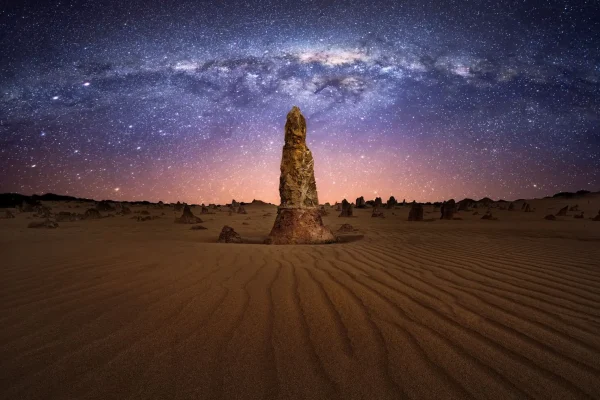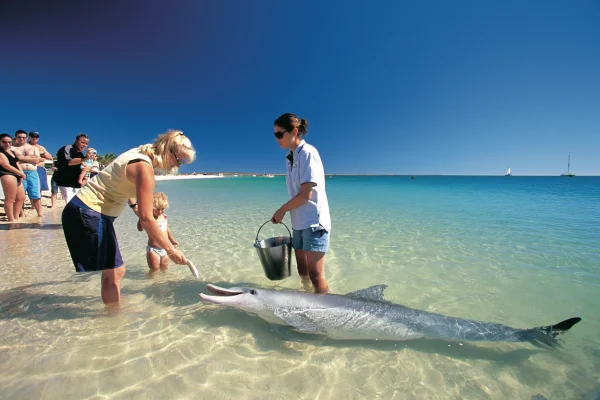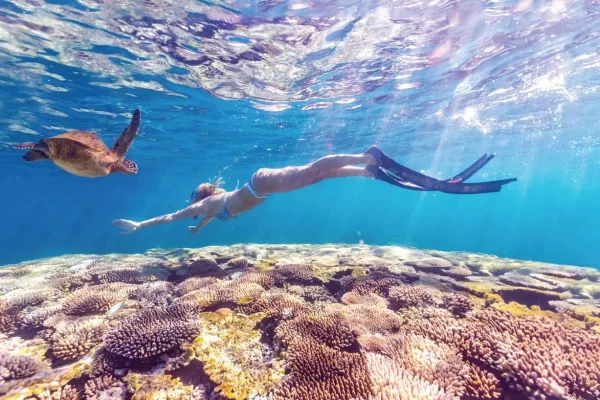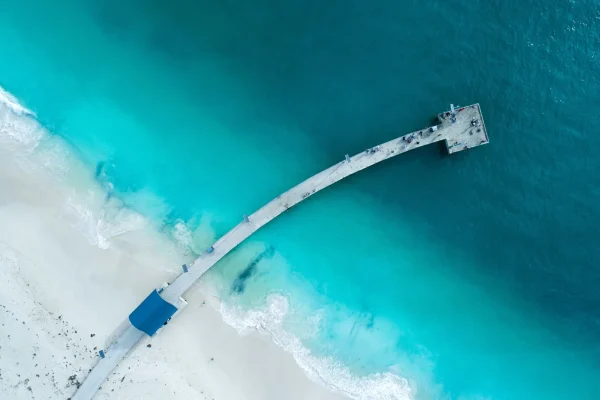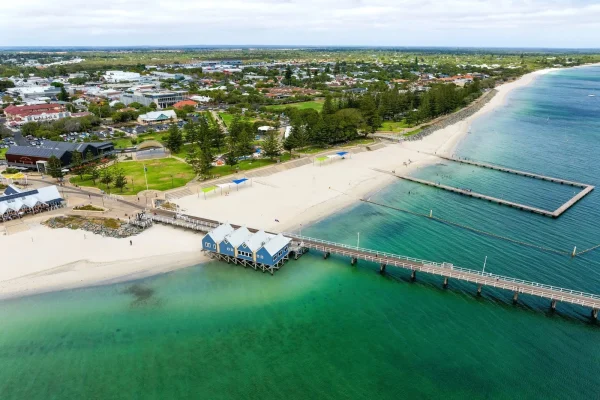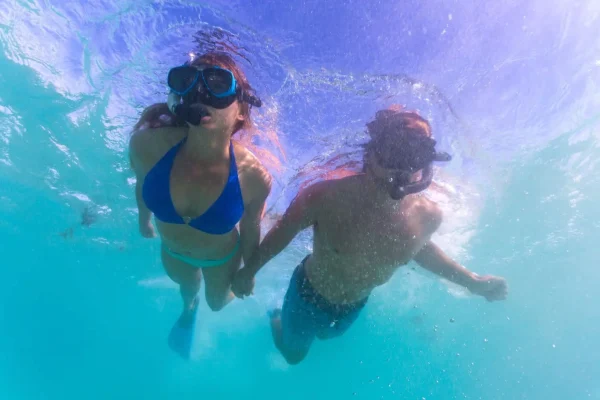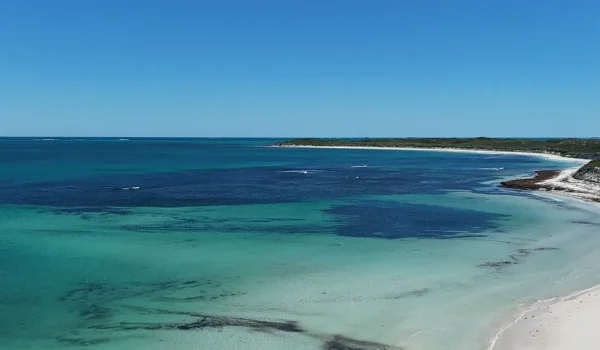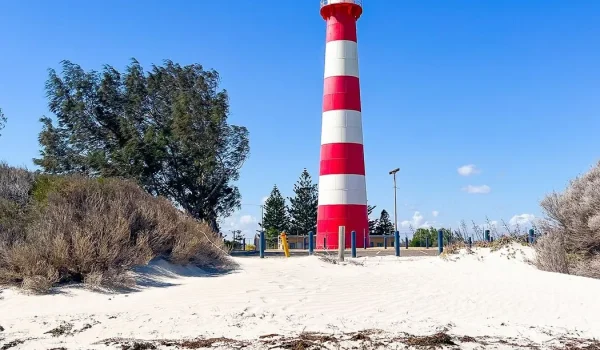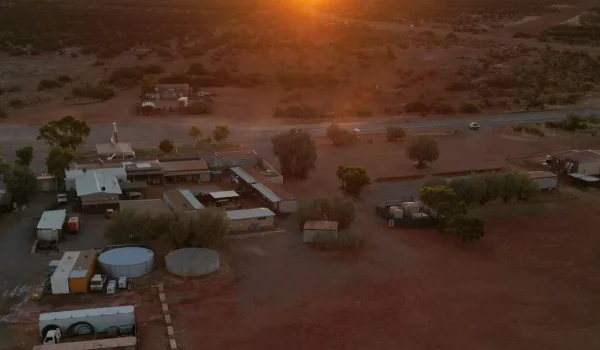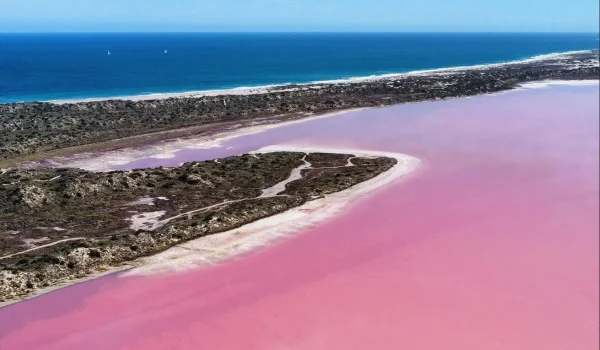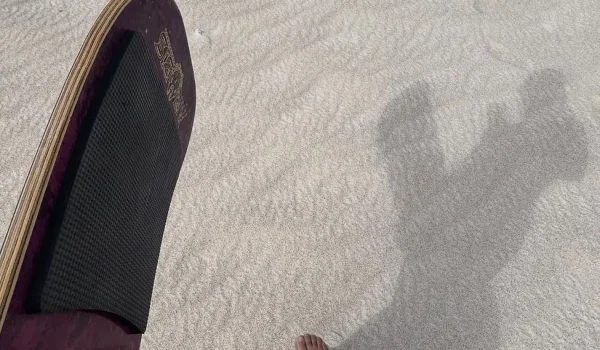The name Nambung National Park will be familiar to many Australians thanks to the surreal limestone pillars known as The Pinnacles. For me, Paul Beames, this chunk of Western Australia’s Coral Coast has always been a standout — not just because of the Pinnacles Desert, but for the geology, Indigenous culture, coastal wildlife and dusty road trips that tie it all together. Out here, you’ll find stromatolites at Lake Thetis, bottlenose dolphins at Hangover Bay, kangaroos at Kangaroo Point, and sea lions in Jurien Bay Marine Park — all within a short scenic drive. It’s a place that rewards the curious traveller who comes ready to explore on foot, by car or even under the Milky Way at night.
The Landscape’s Evolution Through Time
Before road maps, sealed highways or the Pinnacles Desert Discovery Centre, this was and still is Yuet (people) Country — part of the wider Noongar Nation. For the First Nations peoples, the land wasn’t just a curiosity; it was Country tied to survival, story and law. The limestone pillars and coastal dunes were woven into Dreaming stories, the cycles of fish and kangaroos dictated seasonal movement, and the fragile ecosystems of coastal heath and bushland were understood and respected.
Fast forward to European arrival — the Dutch sailed past this coast in the 1600s, noting reefs and dangerous shoals but not bothering much with the desert inland. It wasn’t until the 1800s that settlers explored more deeply. For much of colonial history, the Pinnacles were a kind of strange local landmark. Farmers and travellers talked about the odd limestone outcrops, but it wasn’t until the 20th century that scientists began to piece together the geological story.
In 1969, the Pinnacles area was brought under state protection as part of Nambung National Park, later expanded to include coastal dunes, pristine beaches and Lake Thetis. By 1994, it was declared a full national park. Today it’s one of the most visited parks in Western Australia with over 250,000 visitors a year — but still wild enough that you’ll often have a corner of it to yourself if you head out on the walking trails.
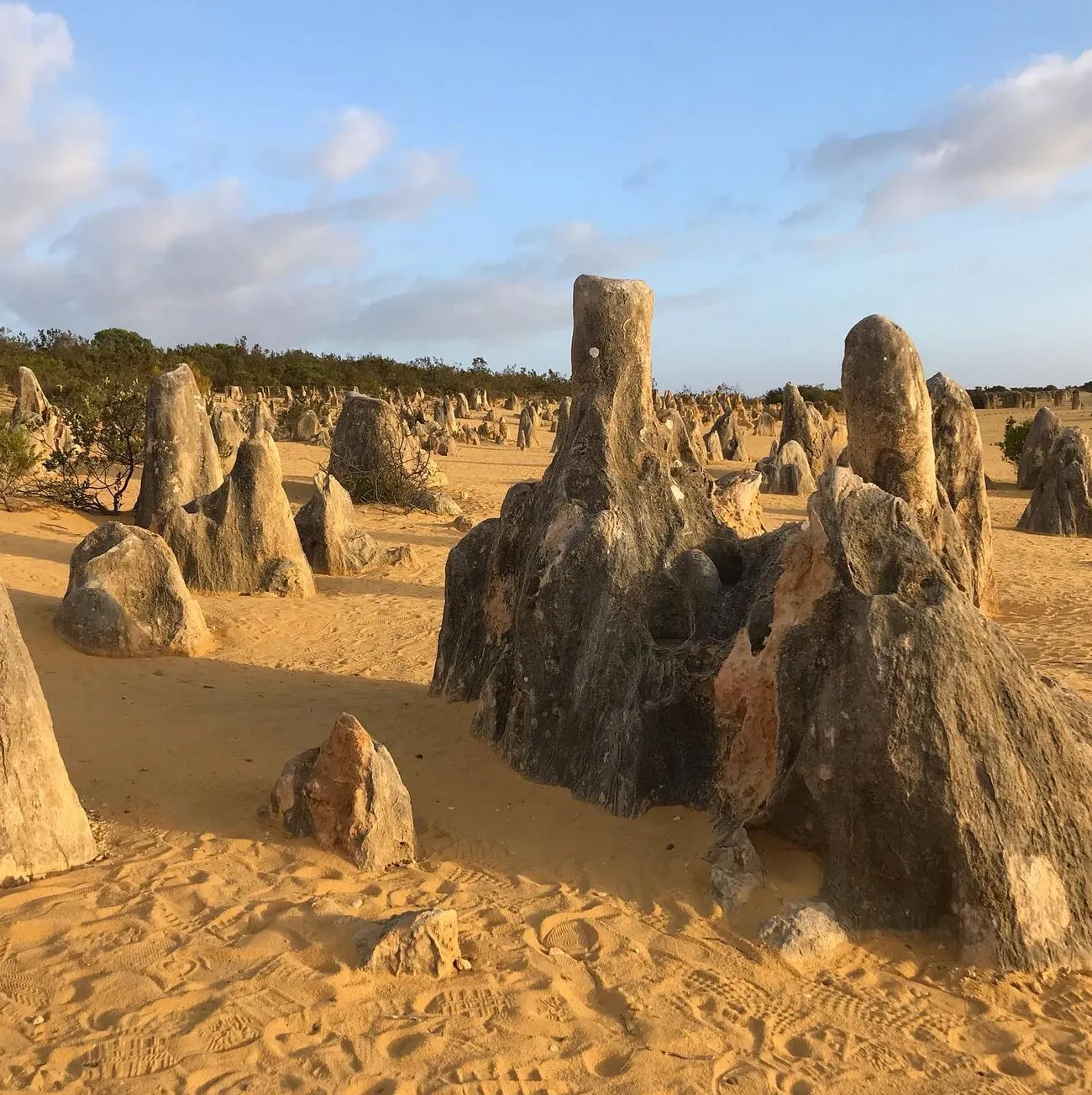

Geology And Other Fun Facts
The park is a living geology classroom. The Pinnacles themselves are limestone pillars formed from compacted seashells and sedimentary rock, capped by calcrete over tens of thousands of years. Wind, erosion and shifting coastal dunes stripped back the sand, exposing the formations we see today.
Pinnacles Desert facts:
- The tallest limestone pillars are over 3.5 metres high.
- Thousands of limestone beds over 190 hectares.
- The surrounding Painted Desert shows colourful dune layers from iron-rich minerals.
- Microorganisms in Lake Thetis create stromatolites and marine thrombolites, some of the oldest living life forms on Earth.
It’s this mix of geology — from limestone cave systems to sedimentary rock layers — that makes Nambung unique.
Best Ways to Reach the Park
Nambung is about 200km north of Perth, an easy drive along Indian Ocean Drive (Indian Ocean Dr). The journey itself is part of the experience — a scenic drive past coastal dunes, Yanchep National Park, and roadside stops perfect for a pie or coffee.
- From Perth: 2-hour drive via Wanneroo Road and Indian Ocean Drive.
- From Cervantes: 17km east of the Pinnacles entrance, along Cervantes Road and Wongonderrah Rd.
- By Tour: Guided trips like a “Lobster and Lavender tour” often include Lake Thetis and Jurien Bay.
- By Plane: Fly into Perth, then self-drive or join a tour. (Sacha Millar and other travellers often share their trips on blogs like On A Plane Again and Little Wandering Wren).
Pro tip: fill up before leaving Perth or Yanchep. There aren’t many big servos between stops, and those towing big rigs will want to plan parking area pullovers carefully.
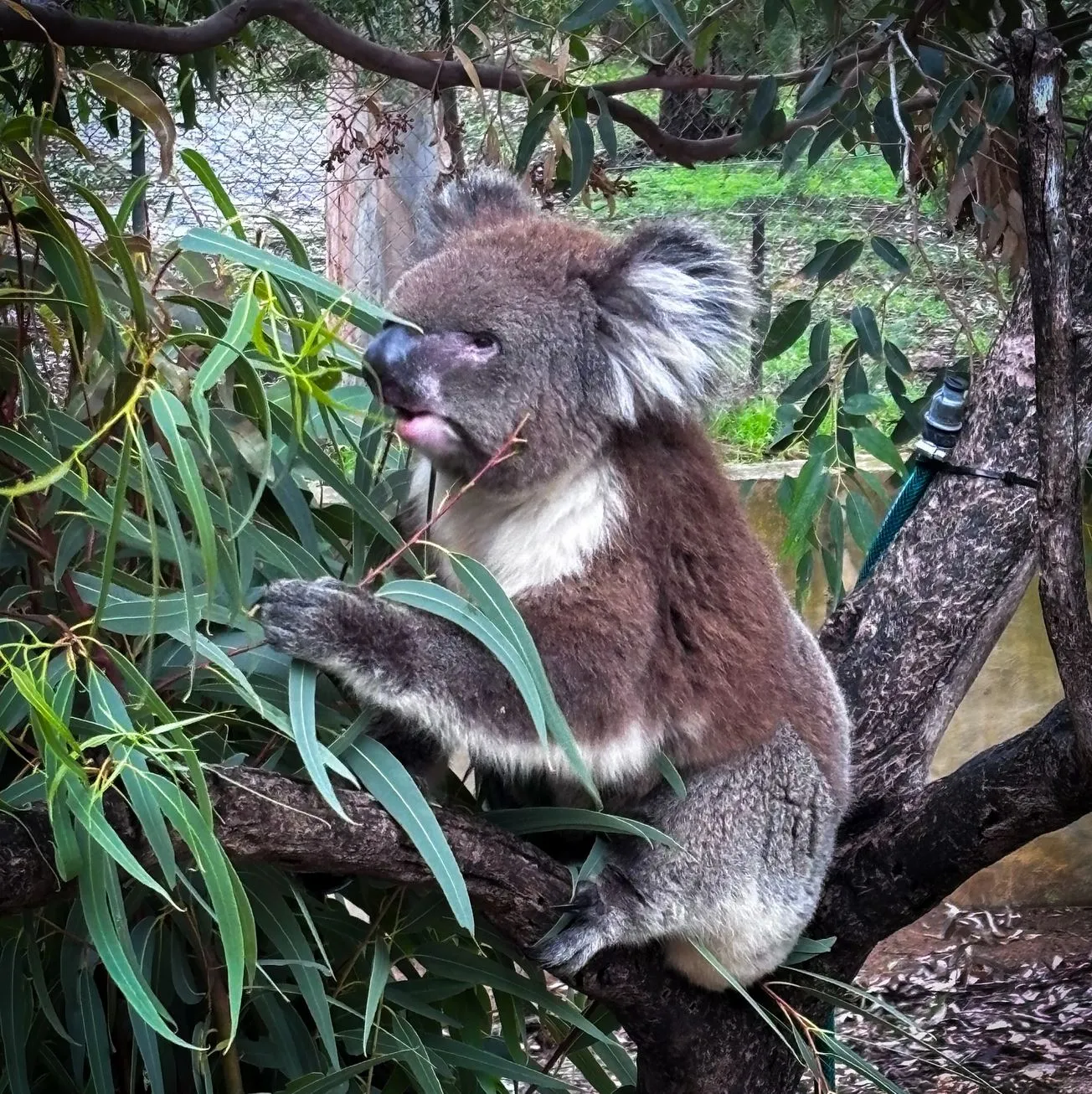
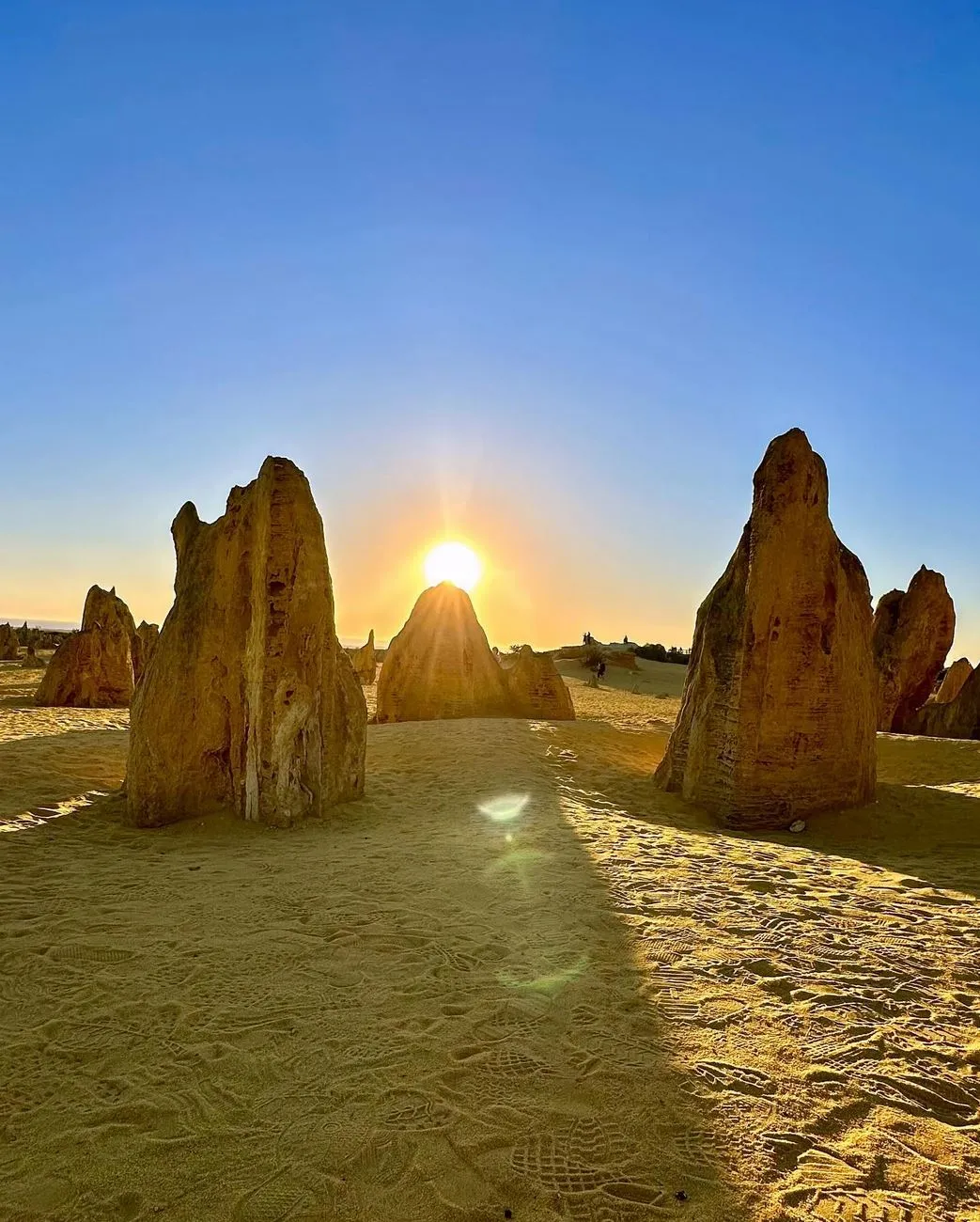
Exploring the Desert on Foot and by Car
Walking trails in the park range from boardwalk strolls to sandy loops.
- Pinnacles Drive (4 km loop): A scenic drive with car pull-ins for photos. Suitable for all vehicles.
- Pinnacles Lookout & Walk Trail: 1.5 km return, with interpretive signs about sedimentary rock, Indigenous stories and geology.
- Lake Thetis Boardwalk Trail: 1.5 km around the lake, showing stromatolites and marine thrombolites.
- Hangover Bay Trail: Short track to secluded white sandy beaches — best for picnics and snorkelling.
- Kangaroo Point Walking Trails: Easy strolls where you’ll see kangaroos at dusk.
Each track is signposted and has parking nearby.
Limestone Desert Wonders
No trip to Nambung is complete without a walk through the Pinnacles Desert. Thousands of limestone pillars rise up from the sand like sentinels, each one unique in shape from erosion. At dawn, the shadows stretch across the desert floor; at dusk, the pillars glow orange as the sun sets over the Indian Ocean.
The Pinnacles Desert Discovery Centre is the best place to learn about the science and cultural significance of the formations. Inside you’ll find exhibits on microorganisms, calcrete capping processes and how Indigenous Australians read the desert.
For photographers, try a night shoot — the desert under the Milky Way is one of WA’s best astrophotography spots.
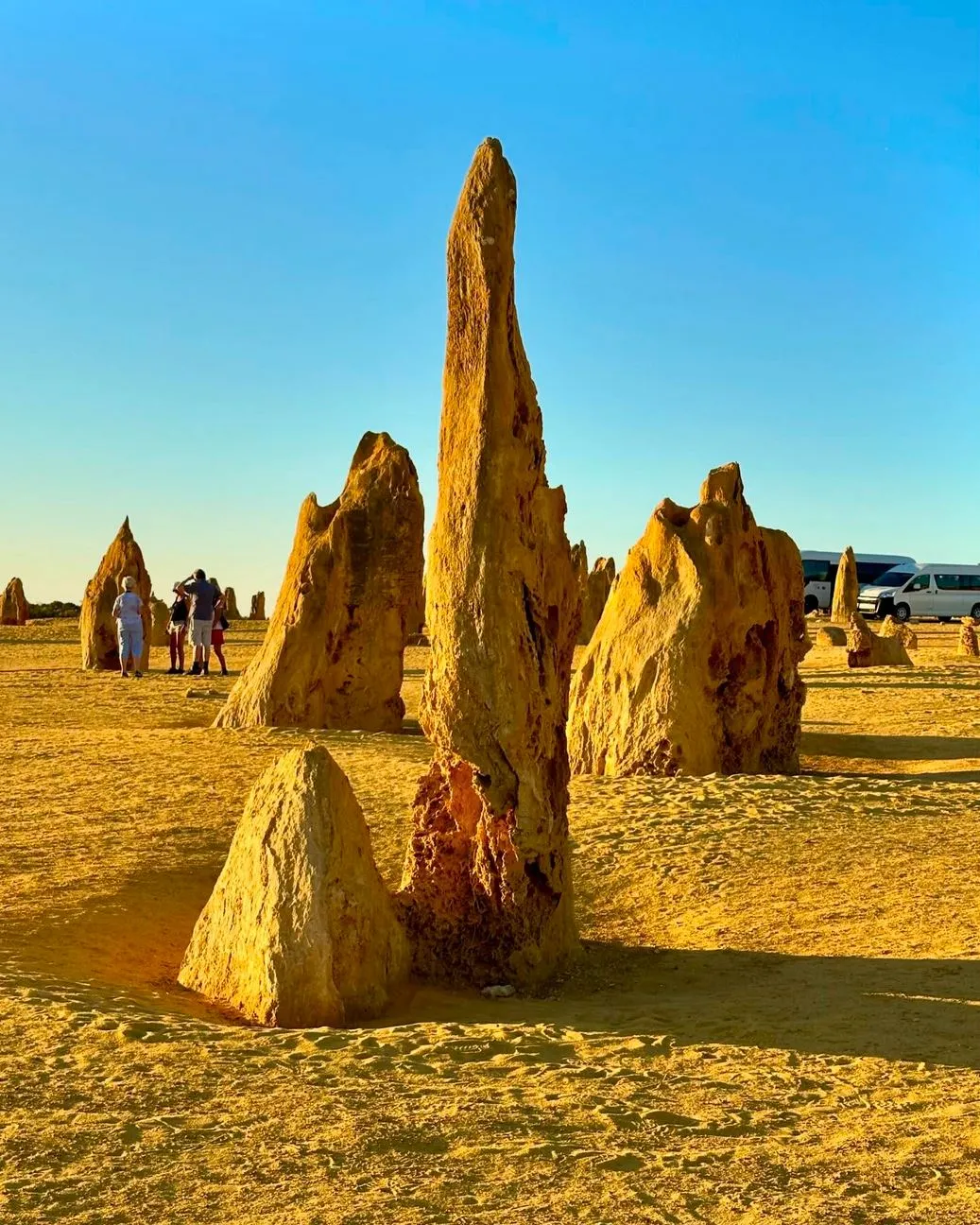
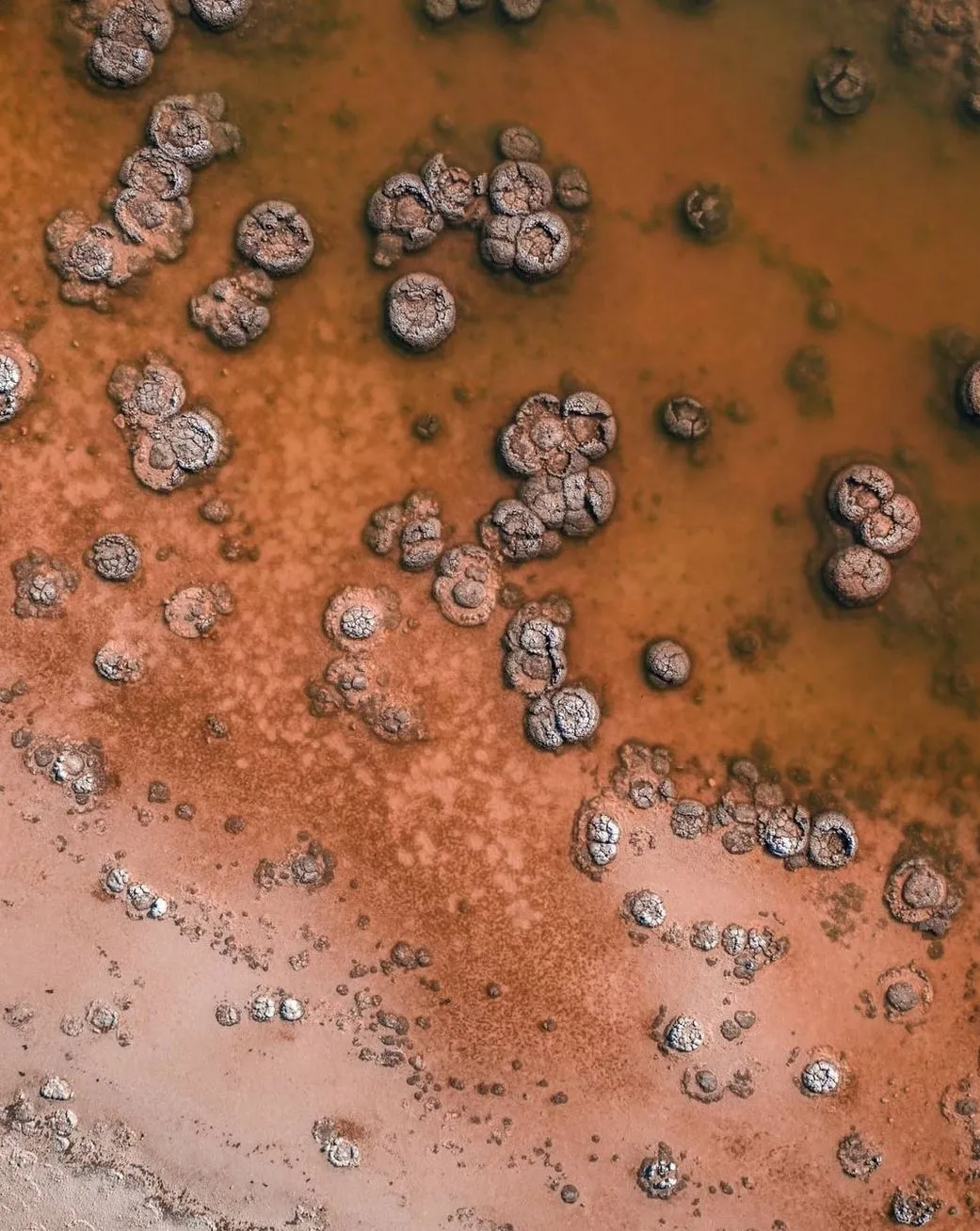
Lake Thetis
Just outside Cervantes Lake, Thetis is home to stromatolites and marine thrombolites — rare structures built by microorganisms over millions of years. These living fossils look like rocks but are busy trapping sediment and photosynthesising just like their ancestors did 3.5 billion years ago.
The boardwalk trail offers a close-up view, with signs explaining how marine organisms shaped the early Earth’s atmosphere. This site is globally significant, and you can walk it in under an hour.
Hangover Bay
Hangover Bay is one of those spots where the bush meets the sea with ease. Here you’ll find gas BBQs, picnic tables and a boat ramp. Families love it for the sheltered swimming and pristine beaches. Wildlife includes bottlenose dolphins, humpback whales during migration and the occasional Australian sea lion lazing offshore. Bring a mask and snorkel to check out the marine park’s reef life.
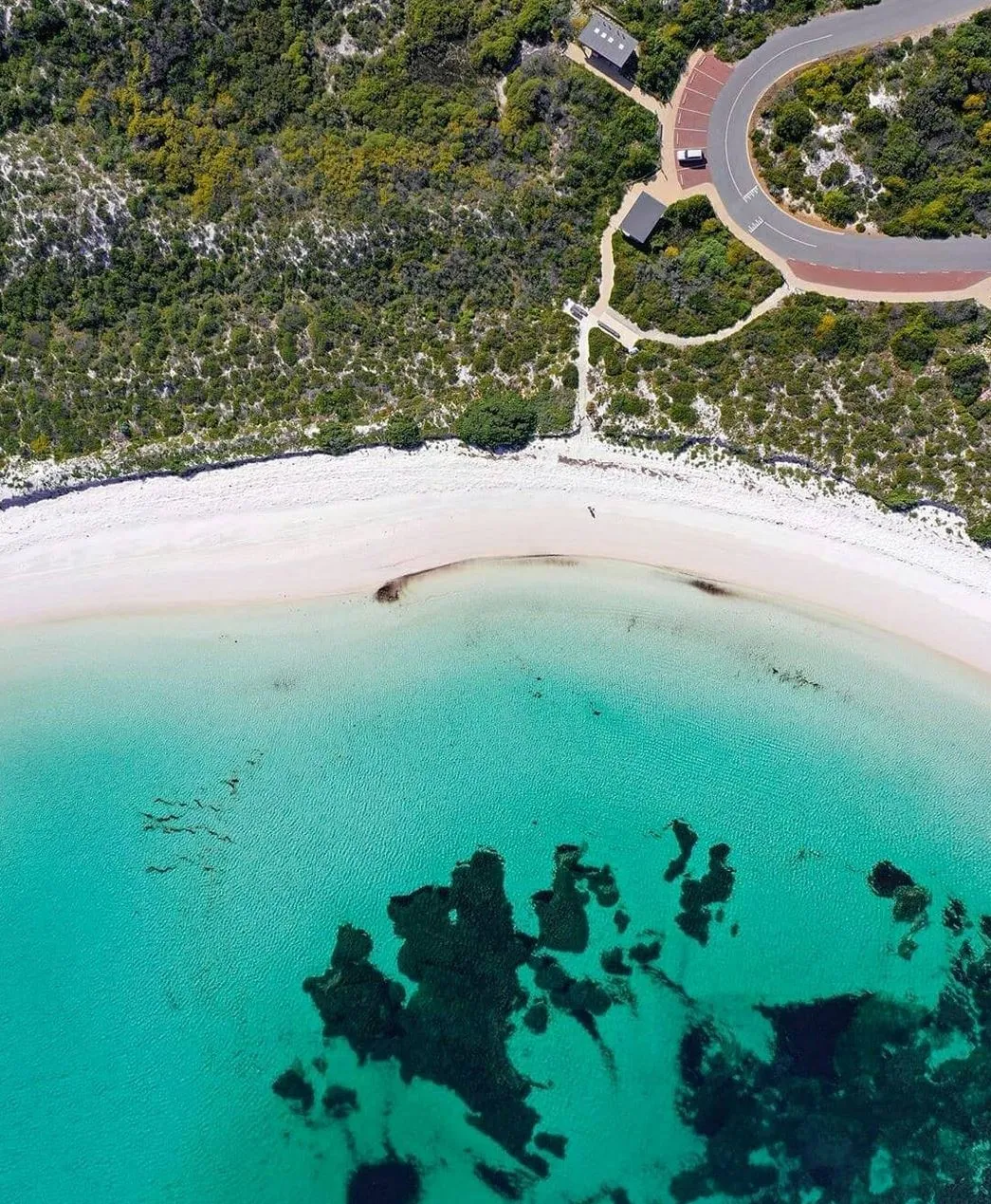
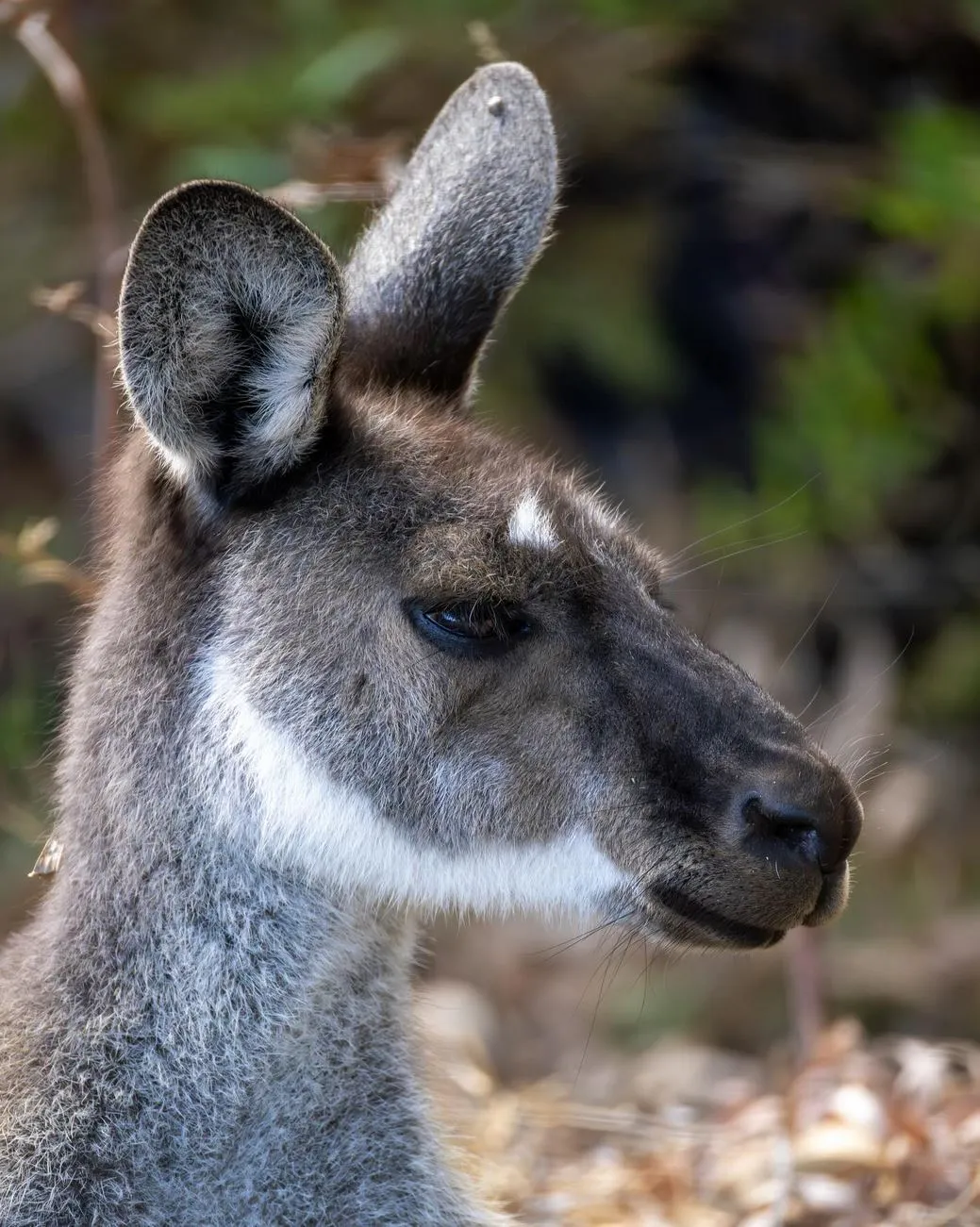
Kangaroo Point
Kangaroo Point is one of the quieter areas of the park, a picnic area with stunning coastal views. True to its name, kangaroos are often seen grazing nearby in the late afternoon.
It’s also a great spot for birdwatching, with honeyeaters, galahs and wedge-tailed eagles often overhead. Down at the shoreline, you might see stingrays in the shallows.
For those looking for a break from the Pinnacles crowds, this is the spot.
Flora, Fauna And Animal Life
At first glance, it looks barren, but Nambung is teeming with life.
- Flora: Banksia woodlands, wattles and coastal heath.
- In spring (July–October), the wildflower season and the park is a sea of colour.
- Mammals: Western grey kangaroos, echidnas and the odd dingo.
- Reptiles: Gould’s monitors and carpet pythons basking in the sun.
- Birdlife: Over 170 species – honeyeaters to wedge-tailed eagles.
- Marine life: The nearby Jurien Bay Marine Park has Australian Sea Lions, dugongs and fish species that attract snorkellers and divers.
Nambung is a wildlife hotspot on any road trip, with its inland desert and coastal ecosystems.

Camping And Accommodation
You can’t camp inside Nambung, but nearby stays suit all budgets.
| Type | Location | Notes | Price range (AUD) |
|---|---|---|---|
| Nambung Station Stay | Near the Pinnacles entry | Rustic bush camping, great for starry nights | $20–40/night |
| Pinnacle Edge Resort | Cervantes | Hotel-style comfort with pool and restaurant | $160–240/night |
| Waddi Bush Camp | Cervantes outskirts | Budget-friendly, bush setting | $25–50/night |
| Jurien Bay options | Holiday parks & motels | Access to Jurien Bay Marine Reserve | $100–220/night |
| Yardie Homestead Caravan Park | On the Coral Coast loop | Good for big rigs and long-haul travellers | $30–70/night |
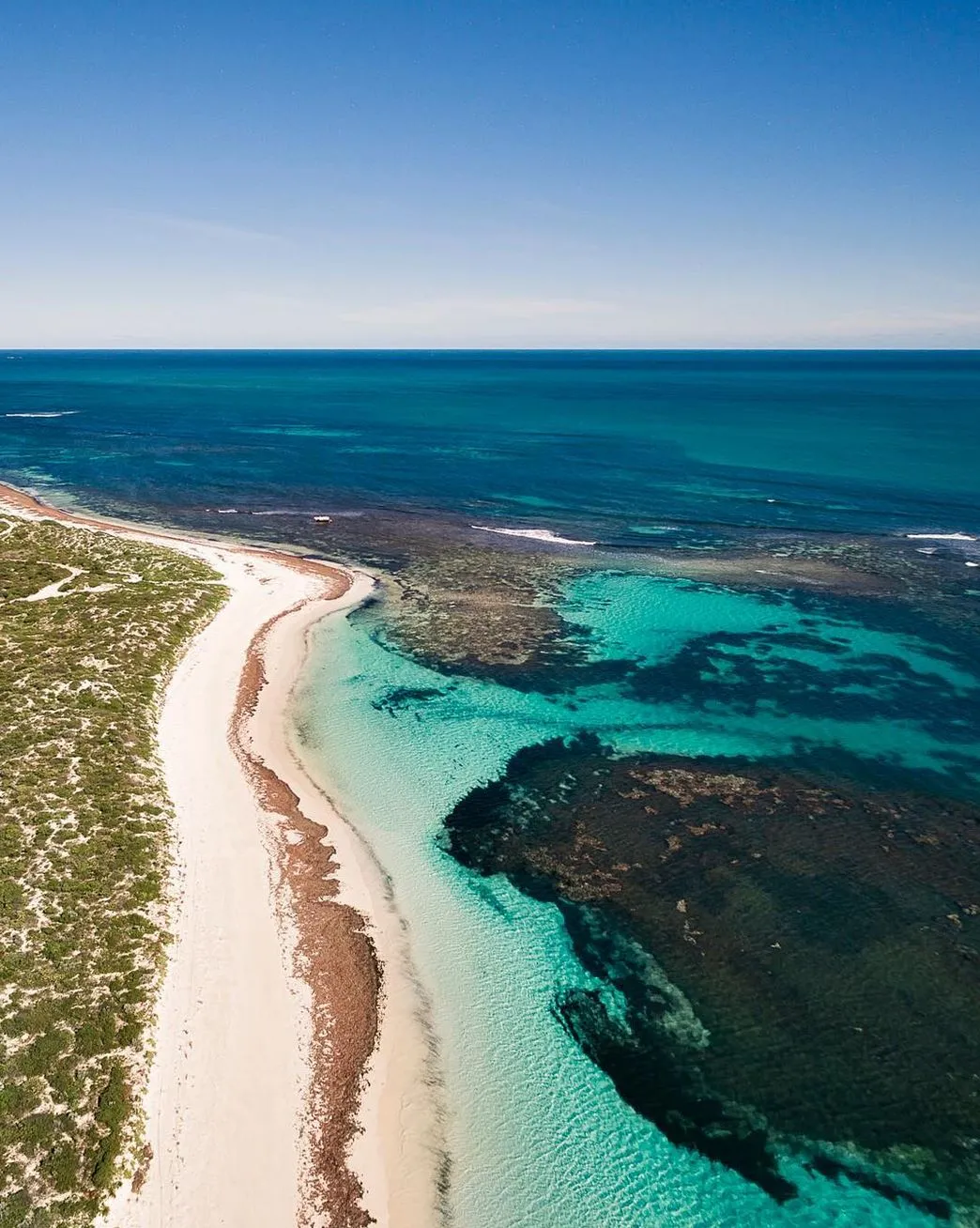
Practical Info
- Season: April–October. Summer is 40°C+.
- Entry fee: $15 per vehicle; WA park passes available.
- Facilities: Toilets at the Discovery Centre and picnic areas; no dunnies in the desert.
- Gear: Fly nets, plenty of water, sunscreen, sturdy shoes for sand.
- Travel: Indian Ocean Drive is sealed; Pinnacles Drive is 2WD.
- Respect: Don’t touch the limestone pillars and don’t damage the desert soil.
Know Before You Go
- No fires; only gas BBQs in designated areas.
- No camping in the park.
- Mobile reception is patchy; download offline maps.
- Check for festivals and events in Cervantes or Jurien Bay — they often coincide with wildflower season.
- Check Parks WA for updates — closures due to bushfires or heat aren’t uncommon.
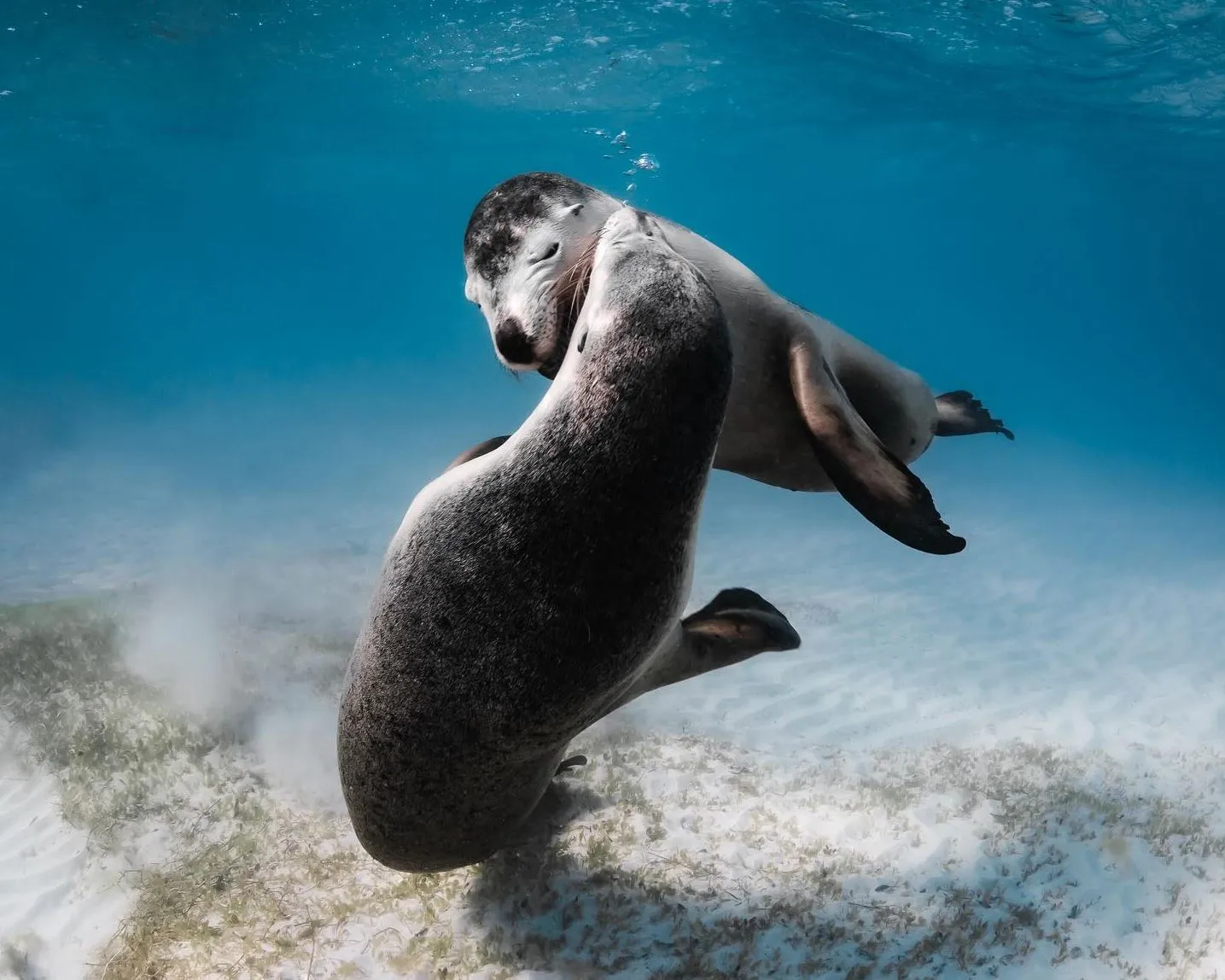
FAQ
Can I camp at Nambung National Park?
No, but Nambung Station Stay, Pinnacle Edge Resort or Waddi Bush Camp nearby have options.
How long do I need at the Pinnacles?
A couple of hours for the Pinnacles or a full day if you add Lake Thetis, Hangover Bay and Jurien Bay.
What wildlife will I see?
Kangaroos, emus, echidnas inland; dolphins, sea lions and even humpback whales along the coast.
Is it family-friendly?
Yes — walking trails, Discovery Centre displays and BBQ areas are great for kids. Just bring hats, water and mozzie spray.
What’s the best time to visit?
Spring (Sept–Oct) for wildflowers and mild weather; winter for comfortable walking; avoid summer heat.

